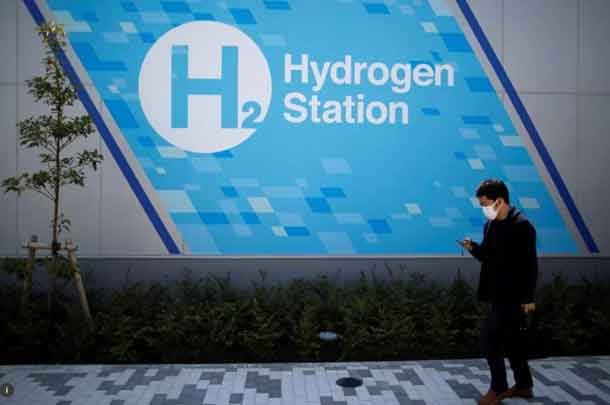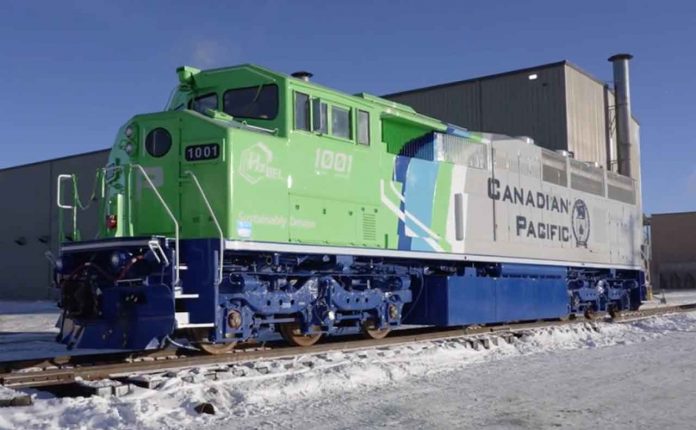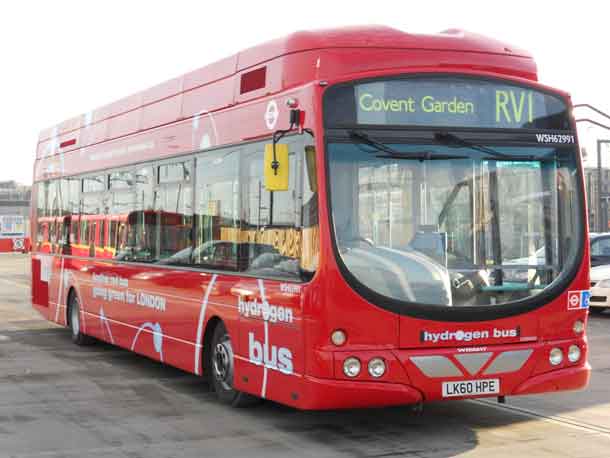THUNDER BAY – Technology – Since 2007 NetNewsLedger has explored the green energy potential of hydrogen powered rail. The project has grown from ideas from a small group of futurists in Moorsville South Carolina, headed by Stan Thompson, to a new global industry on the cutting edge.
The world of rail transportation has shifted over the years, from the Chug-chug of coal fired locomotives, the the diesel powered engines common today, that familiar sound of a train rolling down the tracks could soon be accompanied by a whisper of clean energy, thanks to the growing prominence of hydrail technology.

photo credit: Detlef Matthiessen, Green Party Delegation Leader-Emeritus, Schleswig-Holstein Parliament (Landtag).
Hydrail, which uses hydrogen fuel cells to power locomotives, is no longer a futuristic concept but a rapidly developing reality.
From Humble Beginnings to High-Speed Rail
Hydrail’s origins can be traced back to modest experiments in Japan and a small US mining locomotive about 20 years ago. Today, it’s powering everything from trams and commuter trains to freight locomotives, with exciting advancements on the horizon.
Talgo’s High-Speed Revolution
Spanish train manufacturer Talgo is making headlines with its plan to build the world’s first high-speed hydrogen trains. This ambitious project is a game-changer, demonstrating the potential of hydrail to meet the demands of even the fastest rail lines.
“Most hydrail pioneers didn’t expect to see high-speed hydrail emerge anywhere near this soon,” explains Stan Thompson, Co-founder of the Mooresville Hydrail Initiative, highlighting the significance of this development. The challenge has always been storing enough hydrogen onboard to power heavy, high-speed trains over long distances. Talgo’s innovation appears poised to overcome this obstacle, paving the way for a new era of sustainable high-speed rail travel.
Spain: A History of Hydrail Innovation
Talgo’s project builds on Spain’s long-standing interest in hydrail. Dr. Carlos Navas, a prominent figure in the early days of hydrail, led initiatives in Spain and across Europe, including the demonstration of one of the first hydrail trams in 2011.
Siemens: A Global Leader in Hydrail
Siemens, a global technology leader, is also playing a key role in advancing hydrail. Their Mireo Plus H train, a hydrogen-powered passenger train with a 600 km range, showcases their commitment to sustainable rail solutions. Siemens is actively involved in hydrail projects around the world, contributing to the widespread adoption of this technology.
Canadian Pacific (CP) Rail: Pioneering Hydrail in North America
As reported by NetNewsLedger.com, CP Rail is leading the charge in North America with its hydrogen-powered locomotive in Alberta. This locomotive, fueled by hydrogen produced from solar power, is a significant step towards decarbonizing freight transport. CP Rail’s commitment to hydrail highlights the growing interest in this technology across the North American rail industry.
Converting diesel locomotives to hydrogen is seen not only as a means of meeting greenhouse gas emission targets, but is simply good business.

NetNewsLedger’s Coverage of Hydrail
NetNewsLedger.com has been actively covering the development of hydrail technology, recognizing its potential to transform the rail industry in Northwestern Ontario and beyond. Their reporting highlights the environmental benefits of hydrail and its potential to create economic opportunities in the region.
The Benefits of Hydrail
Hydrail offers compelling advantages over traditional diesel-powered trains:
- Zero emissions: Hydrail produces only water vapor as a byproduct, dramatically reducing the carbon footprint of rail transport.
- Reduced noise pollution: Hydrogen fuel cells are significantly quieter than diesel engines, improving the quality of life for communities near rail lines.
- Increased efficiency: Hydrail can be more energy-efficient than diesel locomotives, particularly over long distances.
While challenges remain, including the development of hydrogen infrastructure and the cost of fuel cells, the future of hydrail is promising. With continued innovation and investment, hydrail is set to revolutionize the rail industry, providing a cleaner, more sustainable transportation solution for the future.






